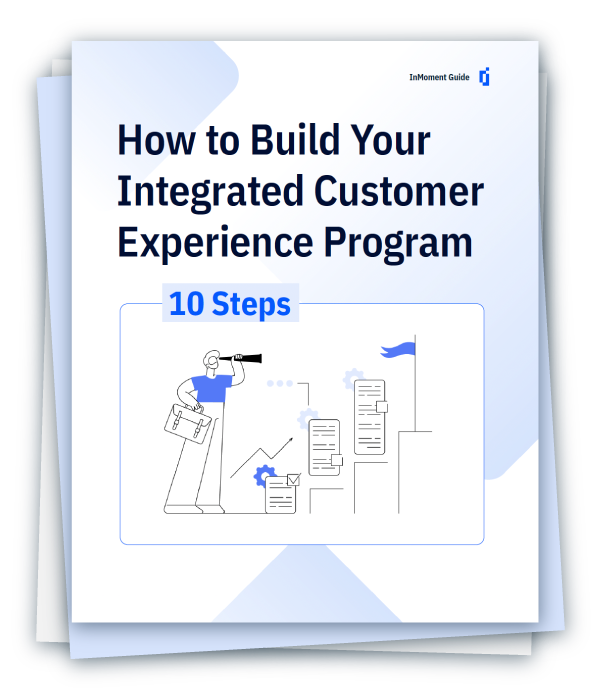11 Articles You Need to Read About Today’s Employee and EX Landscape

In the midst of the fallout of a global pandemic and the Great Resignation, the employee experience (EX) is an incredibly hot topic. With such a complex EX landscape, what do brands need to do to retain their employees, inspire their commitment and advocacy, and attract new talent?
If you’re looking for the answers to these questions, say no more—Pearl-Plaza EX expert Michael Lowenstein is here to help with all the thought leadership you need. Check out these must read articles below!
#1: Employee Engagement: Does the Defense’s Case Still Hold Water?
When it comes to optimizing the employee experience, does an engagement-based approach still work? More and more, we are finding that employee commitment represents a more progressive and actionable EX construct. It better reflects the realities employers face in today’s talent landscape, and how employees are making job-related decisions.
#2: What Causes Employee Turnover? How Does Today’s Unprecedented Employee Churn Impact Customers Tomorrow?
Today, there are multiple drivers, or causes, of employee turnover. And, there are definite connections, or links, to how the rate of employee resignations can, and does, impact customer experiences and perceptions of value. So, how will unprecedented employee churn today impact customers tomorrow?
#3: The Key Post-Pandemic EX Holy Grail for All Companies: We’re Now in the Era of Required Employee Commitment and Linkage to CX
The COVID-19 pandemic has actively contributed to a reassessment of priorities by both employees and employers. Employees are reconsidering the personal value represented by their jobs and roles. Employers are reconsidering methods for building connections as well as performance. So, post-pandemic, what are the key enterprise considerations for improving employee experience?
#4: The Impact of YOLO on Employee and Customer Experience
YOLO (You Only Live Once) is a current societal force which has been over 250 years in the making. Today, it is directly fueling the Great Resignation—especially among GenZ and Millennial employees. This has contributed to greater attention to factors of YOLO which influence employee behavior, especially employer disconnection and churn. So, what is the impact of YOLO on employee and customer experience?
#5: In EX, Quo Vadis? Translated from Latin: Where Are We Going with Employee Experience Improvement?
The employee landscape is undergoing dramatic and rapid change, with a heightened emphasis on emotional drivers and connection to the employer’s culture. For instance, organizations are coming to understand that everyone in the organization is responsible for developing and delivering customer value. So, where is employee experience headed?
#6: Do Companies Recognize the High CX Value of Employee Advocates? Shouldn’t They Want to Cultivate the Kind of Behavior Advocacy Represents?
Employee commitment and advocacy behavior influences customer experience, on both an indirect and a direct basis. Significantly more than either satisfaction or engagement, where employees are viewed as costs, committed employees are key enterprise assets, delivering superior, differentiated customer value. So, how well do companies recognize the value of employee commitment and advocacy?
#7: Diagnosing and Improving Employee Connection to Company Culture
Employees’ connection to, or disconnection from, the employer’s culture—its fairness, transparency, equity, humanity, career opportunities, communication, management trust, etc.—is perhaps the biggest contributor to today’s high resignation rates. Yet, traditional engagement research only minimally addresses, if at all, what cultural factors work, or don’t work, for employees. Through new and focused research approaches, there is a clear, actionable path to enterprise culture improvement. So, will organizations do more to understand the importance of, and level of employee connection to, company culture?
Connect Employees to Customer Culture
#8: Potentially, How Will the Future of Work and ‘The Great Resignation’ Impact Customer Experience?
Today, many organizations are focused on how the future of work will affect both customer experience and employee experience. A major challenge, however, is the continuing high level of employee turnover. This is largely because employees, who actively desire to work for companies with a more humanistic culture and a purpose which they can support, are too often finding these lacking in their present employer. These perceived shortcomings can be reversed. So, how will key realities in the employee landscape impact CX?
#9: It’s Time to Recognize the Impact and Value of Employee Behavior: Making Employee Experience an Organizational Priority
As organizations become more mature in their approaches to employee behavior and experience, a key question which needs to be addressed is the level of enterprise priority, and investment of resources, employee experience receives. And, directly connected to this question, companies need to understand the degree to which employees are recognized as key assets, not costs, when their research and initiatives still follow an engagement-based model. Moving the strategic focus to employee commitment is the next, more progressive, stage of employee experience maturity. So, are organizations making employee experience and employee behavior a priority?
Make Employee Experience a Priority
#10: Employee Advocates: Their Role as Committed Company Assets, Active Communicators, and Key Contributors to Stakeholder Value
Advocacy, where employees are identified as active contributors to business outcomes and are recognized and leveraged as significant enterprise assets, is the ultimate stage of EX maturity. Although developing a corps of such employees is attainable with focused discipline and investment, few organizations reach this level. Not only are employee advocates committed to the organization and its customers, they are emotionally connected to the culture and purpose of their employer. They are active partners in delivering superior customer value. So, do companies see employee advocates as essential enterprise assets?
#11: Elves Rule: Employees ‘Make’ the Experience for Customers, and They Should Be Recognized for It
Just before Christmas, good little children all around the world are preparing their lists of preferred gifts. They are told that the holiday presents they receive will come courtesy of Santa (and Ms.) Claus. But, isn’t it the elves, toiling in anonymity (except for the occasional movie) at their North Pole workshop, who—like employees everywhere—are those most responsible for creating customer joy? So, how well do organizations understand and recognize employees’ essential role in the customer experience and the creation of value?



